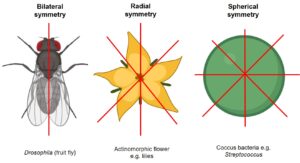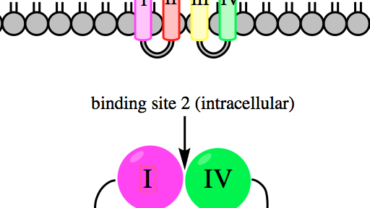bilateral symmetry
bilateral symmetry Characterizing a body form having two similar sides—one side of an object is the mirror image of its other half—with definite upper and lower surfaces and anterior and posterior ends. Also called symmetry across an axis.
Bilateria Members of the branch of eumetazoans possessing bilateral symmetry. Many bilaterian animals exhibit cephalization, an evolutionary trend toward concentration of sensory structures, mouth, and nerve ganglia at the anterior end of the body. All bilaterally symmetrical animals are triploblastic, that is, having three germ layers: ectoderm, endoderm, and mesoderm.
This term also applied in plants. But only to those flowers that can be divided into two equal halves by only one line through the middle. Most leaves are bilaterally symmetrical.
checkout some more interesting articles at biologylearn.com .





